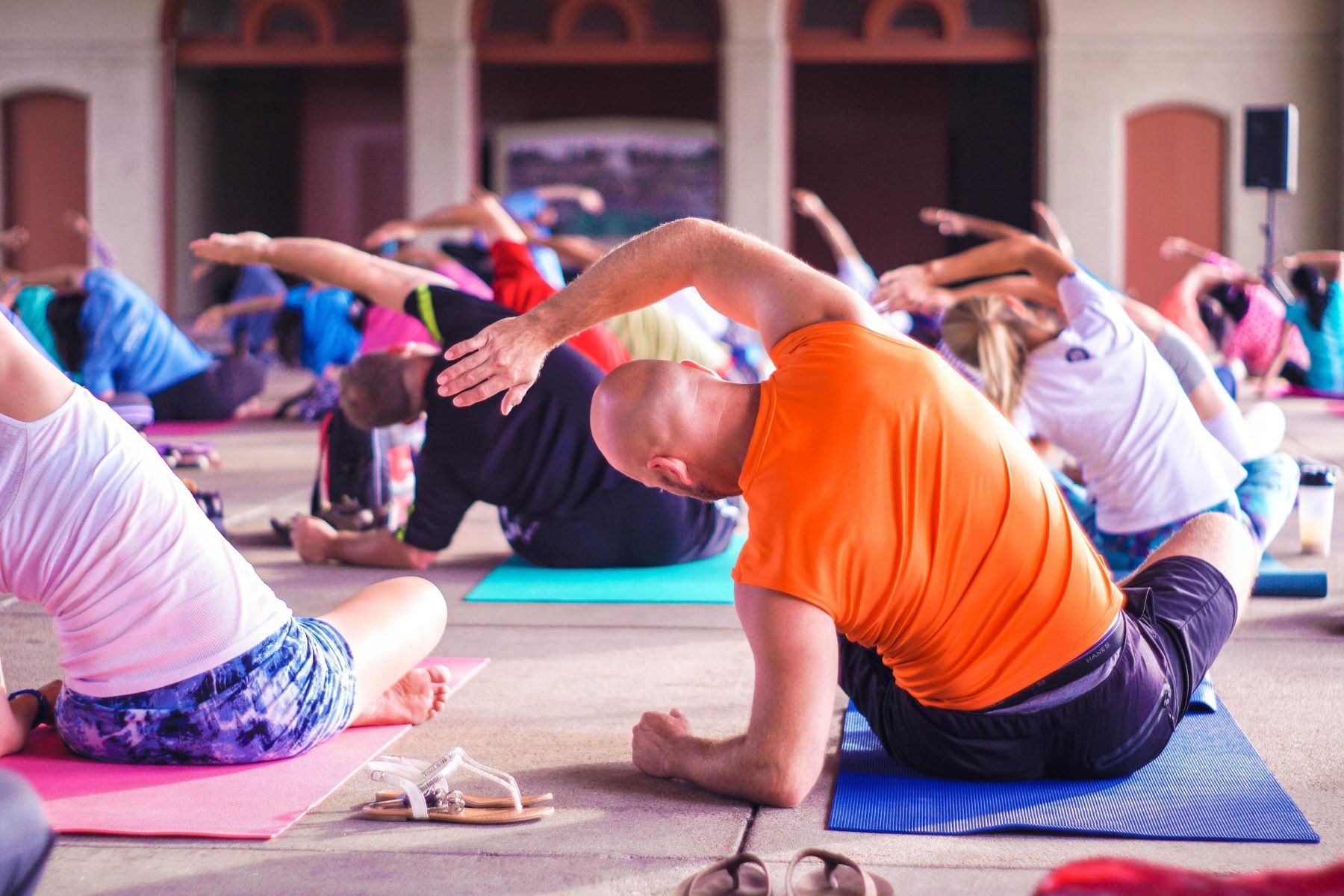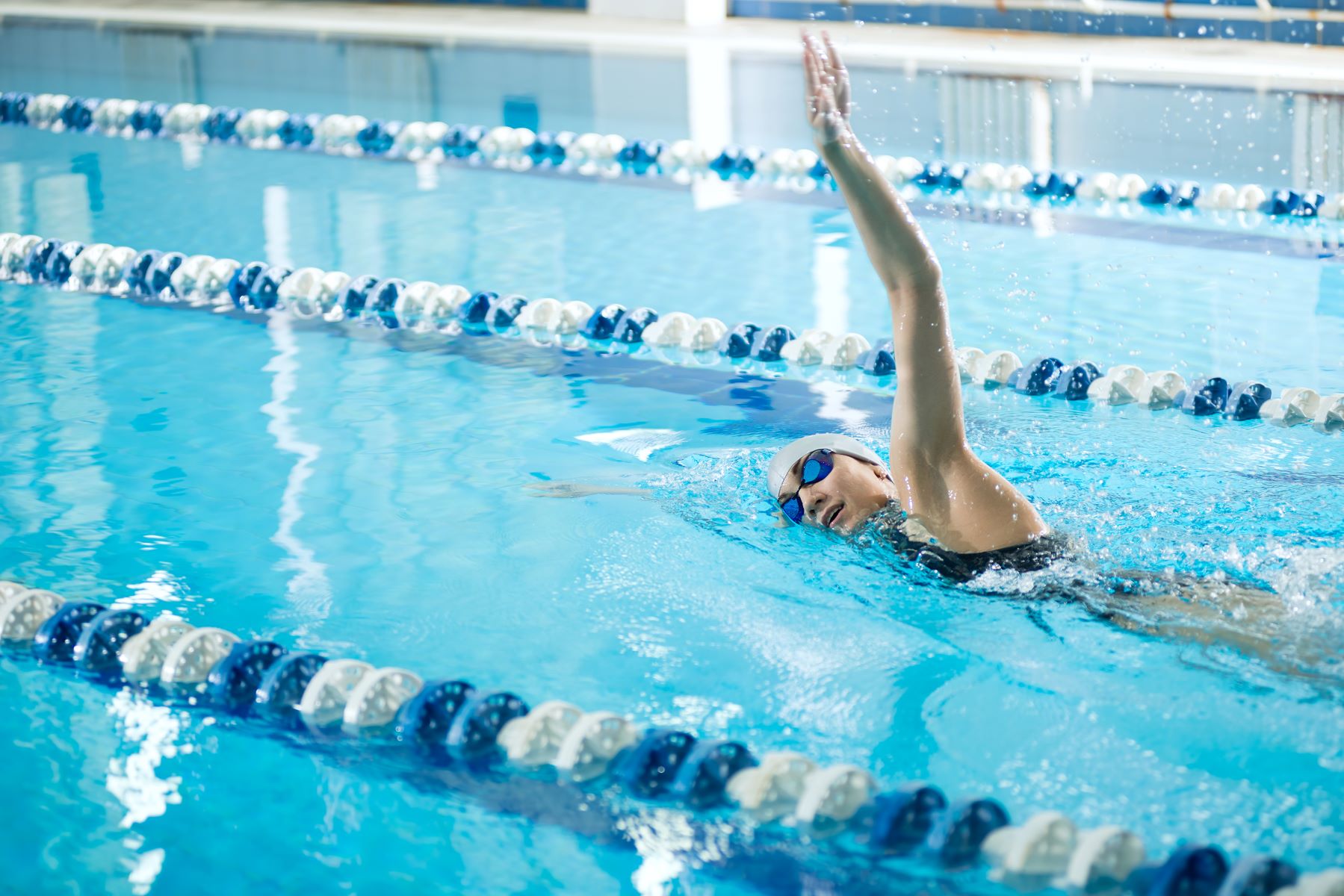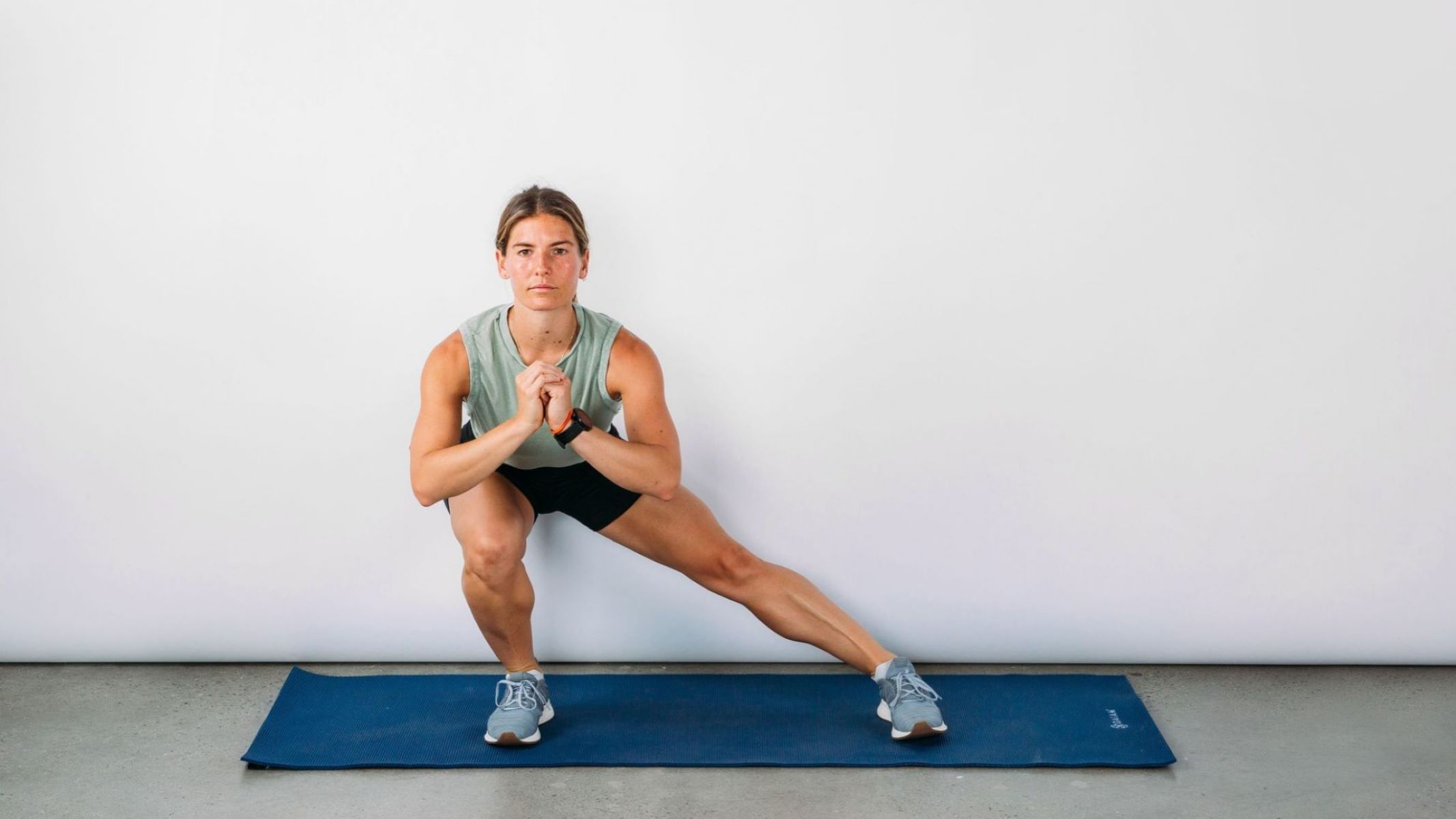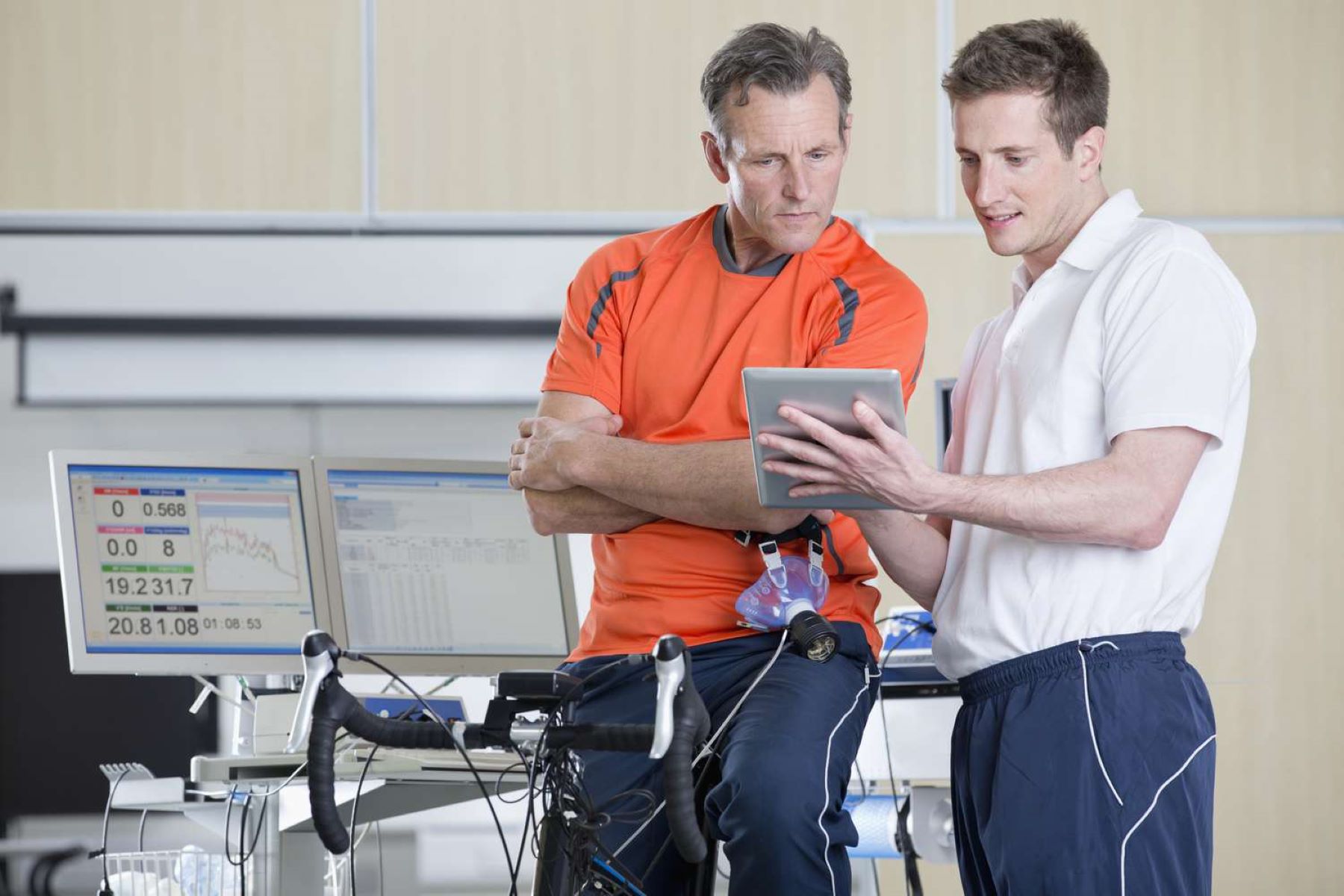Home>Misc>Featured>What Two Organs Of The Body Does Cardiorespiratory Endurance Measure?


Featured
What Two Organs Of The Body Does Cardiorespiratory Endurance Measure?
Modified: January 2, 2024
Discover what two organs of the body are measured by cardiorespiratory endurance in this featured article. Learn why it's crucial for overall fitness and wellness.
Introduction
Welcome to the world of cardiorespiratory endurance! This vital component of fitness measures the ability of your body’s cardiovascular and respiratory systems to deliver oxygen to your muscles during prolonged physical activity. It plays a crucial role in determining your overall fitness level and endurance capacity.
Cardiorespiratory endurance is essential for everyday tasks, such as walking up stairs or carrying groceries, as well as for engaging in more demanding activities like running a marathon or playing sports. By improving your cardiorespiratory endurance, you can enhance your stamina, reduce the risk of cardiovascular diseases, and improve your overall health and well-being.
In this article, we will explore the significance of measuring cardiorespiratory endurance and delve into the two vital organs of the body that play a crucial role in this process. Understanding how these organs function and their relationship to cardiorespiratory endurance will help you appreciate the importance of maintaining and improving this component of fitness.
So, let’s lace up our shoes, take a deep breath, and dive into the fascinating world of cardiorespiratory endurance!
Definition of Cardiorespiratory Endurance
Cardiorespiratory endurance, also known as cardiovascular endurance or aerobic fitness, refers to the ability of your heart, lungs, and blood vessels to efficiently supply oxygen to your working muscles during prolonged physical activity. It measures how effectively your body can sustain aerobic exercise, which involves continuous movement that increases your heart rate and breathing.
When you engage in activities that require cardiorespiratory endurance, such as jogging, swimming, or cycling, your heart pumps more blood to deliver oxygen and nutrients to your muscles. Simultaneously, your lungs work harder to take in oxygen and expel carbon dioxide. The exchange of gases between the air you breathe and your bloodstream allows oxygen to be transported to your muscles, providing them with the fuel they need to sustain the activity.
Cardiorespiratory endurance is different from muscular strength and endurance, which focus on the capacity of your muscles to generate force and resist fatigue in short bursts of activity. While muscular strength and endurance are important, cardiorespiratory endurance specifically measures how well your cardiovascular and respiratory systems can handle prolonged exercise without fatigue.
Improving cardiorespiratory endurance offers several benefits. It enhances your body’s ability to use oxygen efficiently, allowing you to perform physical activities with less effort and for longer durations. It also strengthens your heart, increases lung capacity, lowers resting heart rate, and improves the delivery of oxygen and nutrients throughout your body. Furthermore, it can lead to weight loss, reduced risk of chronic diseases, improved mental health, and increased overall stamina and energy levels.
Now that we have a clear understanding of what cardiorespiratory endurance entails, let’s explore why it is crucial to measure this component of fitness.
Importance of Measuring Cardiorespiratory Endurance
Measuring cardiorespiratory endurance is essential for several reasons. It provides valuable insights into your current fitness level, helps set realistic goals, and allows you to track your progress over time. Here are some key reasons why measuring cardiorespiratory endurance is important:
- Evaluation of Fitness Level: By measuring your cardiorespiratory endurance, you can determine how effectively your cardiovascular and respiratory systems are functioning. This assessment provides a baseline fitness level that can help you gauge your overall health and identify areas for improvement.
- Goal Setting: Knowing your current cardiorespiratory endurance can help you set realistic and achievable fitness goals. Whether it’s improving your running endurance, completing a long-distance hike, or participating in a specific sport, having these measurable goals can provide motivation and guide your training regimen.
- Tracking Progress: Regularly measuring your cardiorespiratory endurance allows you to track your progress over time. You can see how your fitness level improves as you engage in consistent aerobic exercise and make lifestyle changes. This feedback can be inspiring and serve as a reminder of the positive impact your efforts are having on your health.
- Identifying Weaknesses: Measuring cardiorespiratory endurance can help identify any weaknesses or limitations in your fitness routine. It may highlight areas where your performance lags and provide insight into potential underlying health issues. This knowledge can guide you in creating a well-rounded exercise plan that targets your specific needs.
- Monitoring Health: Cardiorespiratory endurance is closely linked to cardiovascular health. Regularly measuring it can help monitor the efficiency of your heart and lungs, identify any potential cardiovascular problems, and serve as an early warning sign of health issues. Detecting and addressing these concerns early on can prevent the development of more serious conditions.
Measuring cardiorespiratory endurance offers valuable information about your fitness level, enables goal setting, facilitates progress tracking, helps identify weaknesses, and aids in monitoring your overall health. Let’s now explore the specific organs of the body that play a crucial role in cardiorespiratory endurance measurement.
Organs of the Body Involved in Cardiorespiratory Endurance
Cardiorespiratory endurance relies on the coordinated functioning of several organs in the body. The two primary organs that play a vital role in cardiorespiratory endurance are the heart and lungs. Let’s take a closer look at how these organs contribute to the measurement of cardiorespiratory endurance:
- Heart: The heart is a muscular organ responsible for pumping oxygen-rich blood to all parts of the body. During exercise, the heart works harder to meet the increased oxygen demands of the muscles. It beats faster and pumps more blood with each contraction, ensuring that an adequate supply of oxygenated blood reaches the working muscles.
- Lungs: The lungs are the organs responsible for exchanging oxygen and carbon dioxide between the air we breathe and the bloodstream. When you engage in aerobic exercise, your lungs expand and contract at a faster rate, allowing you to take in more oxygen and expel waste carbon dioxide. This increased oxygen intake fuels the body’s energy production and helps remove metabolic waste products.
The heart and lungs work together in a finely tuned partnership during physical activity. As you exercise, your lungs bring in oxygen, which is then transported by the bloodstream to the heart. The heart pumps this oxygenated blood to the muscles, where it is used in the production of energy. The muscles generate carbon dioxide as a byproduct, which is carried back to the lungs through the bloodstream. The lungs then expel the carbon dioxide from the body during exhalation.
Efficient functioning of the heart and lungs is essential for optimal cardiorespiratory endurance. Regular cardiovascular exercise, such as running, swimming, or cycling, strengthens these organs, improves their capacity to deliver oxygen, and enhances their efficiency in removing waste products. Thus, the measurement of cardiorespiratory endurance is closely linked to the performance and health of these two vital organs.
Now that we understand the role of the heart and lungs in cardiorespiratory endurance, let’s explore the relationship between these organs and the measurement of this important fitness component.
Relationship between Cardiorespiratory Endurance and the Measured Organs
Cardiorespiratory endurance and the measured organs, the heart and lungs, have a reciprocal relationship. As cardiorespiratory endurance improves, the efficiency and function of these organs also enhance, while a decline in cardiorespiratory endurance can have negative effects on the health and performance of the heart and lungs.
When cardiorespiratory endurance is low, the heart has to work harder to meet the oxygen demands of the body during physical activity. The heart rate increases, and the heart muscle has to contract more forcefully to pump an adequate amount of oxygenated blood. Over time, this increased workload can lead to hypertrophy, or an enlargement of the heart muscle, which is not desirable. In contrast, individuals with good cardiorespiratory endurance have hearts that are more efficient and don’t have to work as hard.
Similarly, the lungs also adapt to the demands of cardiorespiratory endurance. Regular aerobic exercise improves lung capacity, allowing them to take in and expel more air with each breath. This increased lung capacity enables a more efficient exchange of oxygen and carbon dioxide, ensuring that the muscles receive the necessary oxygen and waste products are removed effectively. For individuals with poor cardiorespiratory endurance, their lungs may have a reduced capacity to deliver oxygen to the bloodstream, leading to feelings of breathlessness and decreased performance during physical activity.
Furthermore, having strong cardiorespiratory endurance can positively impact the overall health of these organs. Regular aerobic exercise improves heart health by reducing the risk of cardiovascular diseases such as heart attacks and strokes. It can also help manage blood pressure and cholesterol levels, reducing the strain on the heart. Similarly, maintaining good cardiorespiratory endurance supports lung health, reducing the risk of respiratory conditions and improving overall respiratory function.
The relationship between cardiorespiratory endurance and the heart and lungs highlights the importance of maintaining and improving this fitness component for the optimal functioning of these organs. By engaging in regular aerobic exercise and focusing on improving cardiorespiratory endurance, individuals can enhance the performance and health of their heart and lungs, leading to improved overall fitness and well-being.
Now that we understand the relationship between cardiorespiratory endurance and the measured organs, let’s explore the methods used to measure this crucial fitness component.
Methods to Measure Cardiorespiratory Endurance
There are several methods available to accurately measure cardiorespiratory endurance. These methods provide insights into your fitness level, enable you to track your progress, and help tailor your training program. Here are some commonly used methods:
- VO2 max Testing: VO2 max is the maximum amount of oxygen your body can utilize during intense exercise. VO2 max testing involves wearing a mask or mouthpiece that measures the amount of oxygen you breathe in and the carbon dioxide you exhale while performing a graded exercise test on a treadmill or stationary bike. This test provides a precise measurement of your cardiorespiratory fitness level and is considered the gold standard for assessing aerobic capacity.
- Field Tests: Field tests are practical and cost-effective methods to estimate cardiorespiratory endurance. These tests typically involve activities such as the 1-mile run, the 3-minute step test, or the 6-minute walk test. The results of these tests, along with other factors like age and gender, can be used to estimate VO2 max and determine your fitness level.
- Heart Rate Monitoring: Monitoring your heart rate during exercise provides insights into your cardiorespiratory endurance. You can use a heart rate monitor or wearable device to measure and track your heart rate throughout your workout. The heart rate response to exercise can help gauge the intensity of your workout and assess your cardiovascular fitness level.
- Time Trials: Time trials involve performing a specific distance or duration of exercise, such as running or cycling, as fast as possible. By tracking your time and comparing it to previous attempts, you can assess your cardiorespiratory endurance. This method provides a simple and practical measure of performance improvement over time.
- Rating of Perceived Exertion (RPE): RPE is a subjective scale that assesses how hard you perceive the exercise to be. It ranges from 6 to 20 or 1 to 10, with 6 or 1 being very light exertion and 20 or 10 being maximal exertion. By using the RPE scale during exercise, you can gauge the intensity of your workout and make adjustments as needed.
Each method has its advantages and limitations, and the choice of measurement method depends on factors such as accessibility, budget, and desired level of precision. Regardless of the method used, regular measurement of cardiorespiratory endurance is essential to monitor progress, set realistic goals, and tailor your training program for optimal results.
Now that we have explored the various methods to measure cardiorespiratory endurance, let’s wrap up our discussion.
Conclusion
Cardiorespiratory endurance plays a vital role in determining overall fitness and endurance capacity. It measures the ability of your cardiovascular and respiratory systems to supply oxygen to your working muscles during prolonged physical activity. By improving cardiorespiratory endurance, you can enhance stamina, reduce the risk of cardiovascular diseases, and improve your overall health and well-being.
In this article, we explored the importance of measuring cardiorespiratory endurance and its relationship with the two key organs involved: the heart and lungs. Efficient functioning of these organs is essential for optimal cardiorespiratory endurance, while a decline in endurance can have negative effects on their health and performance.
Methods such as VO2 max testing, field tests, heart rate monitoring, time trials, and the rating of perceived exertion (RPE) can be used to accurately measure cardiorespiratory endurance. These methods provide valuable insights into fitness levels, track progress, and help tailor training programs for optimal results.
Measuring cardiorespiratory endurance is important for evaluating fitness levels, setting realistic goals, tracking progress, identifying weaknesses, and monitoring overall health. By focusing on improving this fitness component, individuals can enhance the performance and health of their heart and lungs, leading to improved overall fitness and well-being.
So, lace up those shoes, take deep breaths, and embark on a journey to improve your cardiorespiratory endurance. Your heart, lungs, and overall health will thank you!









